Focal length: ~50mm, selective focus lens
Mount: canon
Min focus distance: 0.50m
Aperture: F 2.0 - F 22 via insertable disks
Length (from flange): 60mm [+ 27mm for the adapter]
Diameter: 60mm
Weight: 170gr.
The
Lensbaby Composer Pro lens has a ball-joint type tube to move
the sweet spot. It has removable inserts
of the "swap" system and a focus ring. So there is no back and forth
movement of the tube anymore. Squeezing and releasing the tube aspires
dust into
your camera which can spoil your sensor. Zoom lenses do the same, but
in general they are well protected against dust passing inside via an
elaborate seal system.
Some pictures:

A
Lensbaby Composer Pro lens with its Double Glass lens and its cap on
the A7.
Some general remarks about
Lensbabies. The first Lensbaby was a simple
plastic lens in
a simple PVC tube which has to be squeezed to focus and/or bent to move
the sharp area. The lenses are
set to be sharp only at the center, the rest is blurred, simulating
perfectly a "bokeh" effect. The sharp spot (called sweet spot) can be
shifted sideways. They cover full
format. The lenses are soft to blurry at full
aperture. Closed down they becoming sharper, but retain blurred edges.
The idea was a great success. Now there are plenty of different systems
and a wide choice of accessories and even swappable lenses.
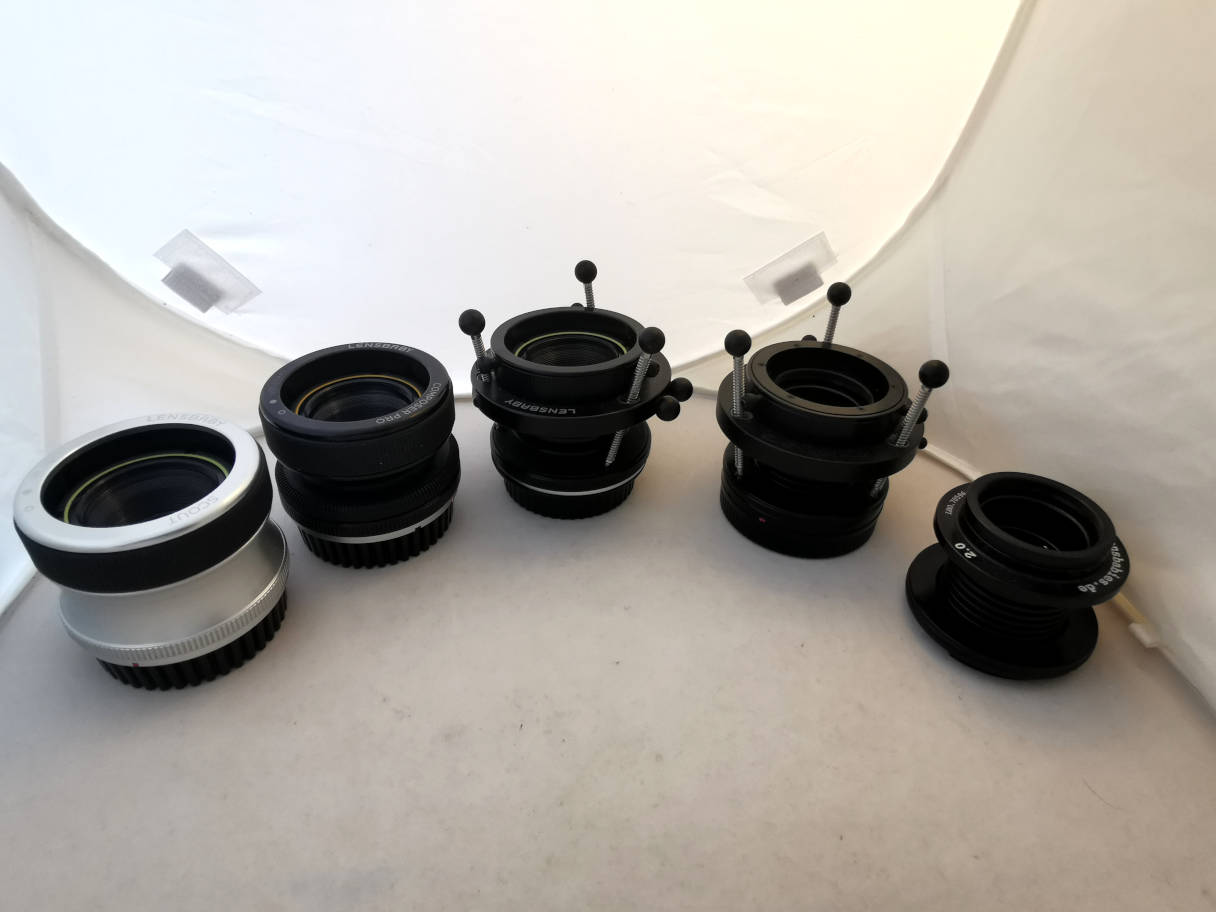
From right to left: Lensbaby 2.0,
close to the first Lensbaby, fixed lens, but glass, not plastic. 3G,
similar to 2.0, but bending and sqeezing can be done precisely and
stays so until you push the release button. It has also a focus thread
for precise focussing. Control freak,
a 3G with swappable lenses. Composer
Pro, presented her, has a ball-joint type tube to move the sweet
spot, swappable lenses and a focus ring. Scout, rigid tube, no bending,
swappable inserts, focus ring, often sold with a fisheye lens.

A complere Composer Pro set in its bag.

There are 4 lens inserts, double glass, single glass, plastic and
pinhole (one mounted and 3 in their containers), a full aperture set, 2
close-up lenses, some fancy masks ans a cap.
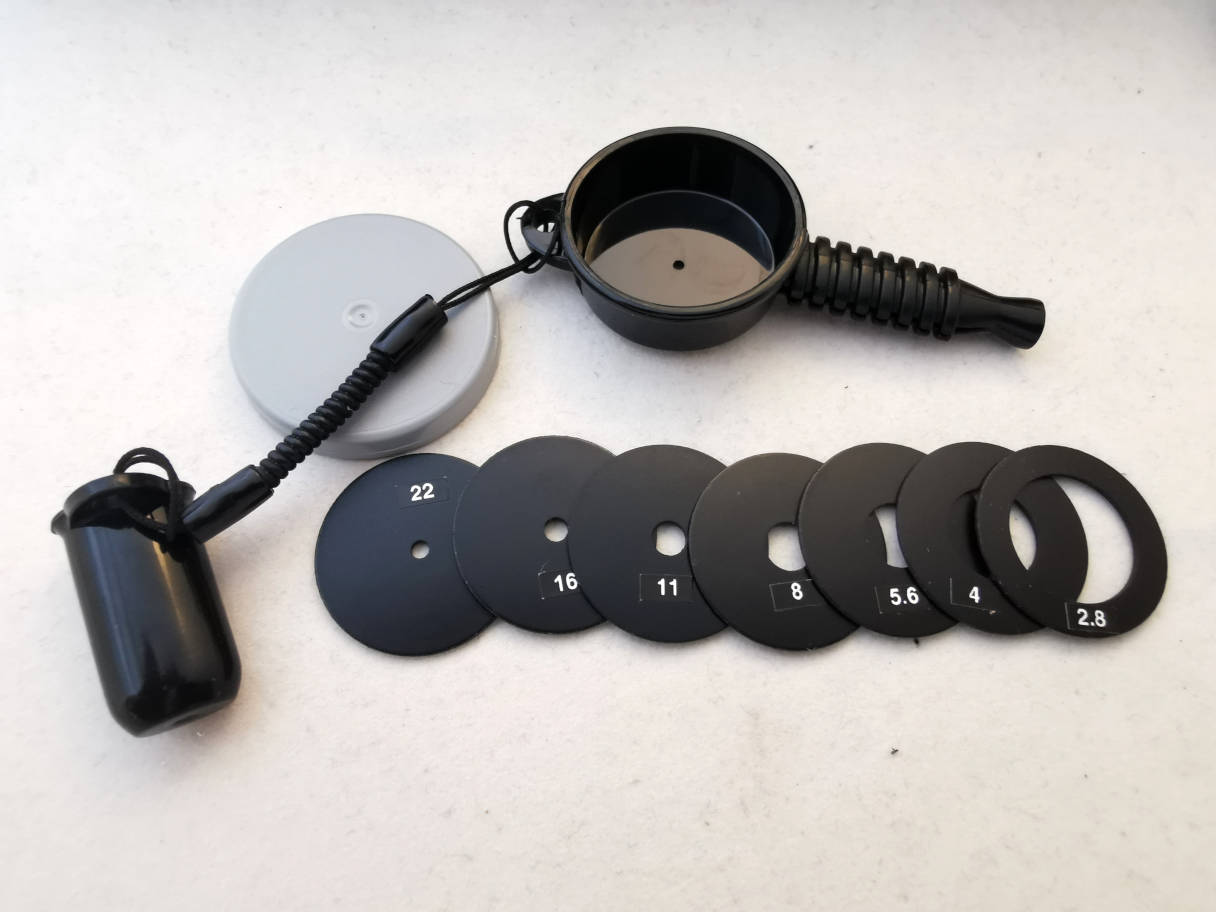
The aperture disks have to be put in front of the lens and are held by
the magnets. This is a full 7-aperture set with a very handy magnetic
tool to change
the disks.

Some fancy masks to be put instead of the aperture disks.

The close-up lenses and other accessories can be screwed onto the front
of the insert.
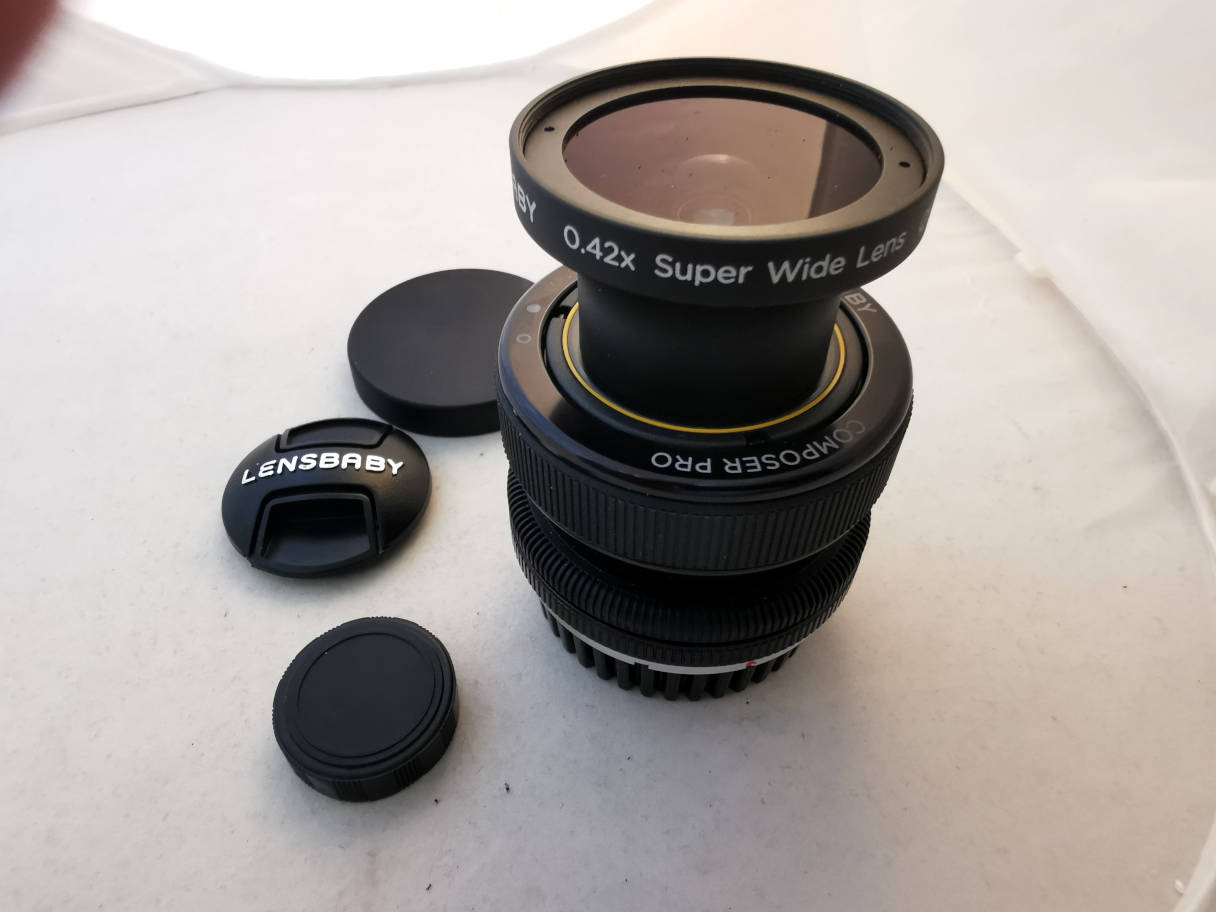
There is a super wide lens available. It comes with 2 rubber caps.
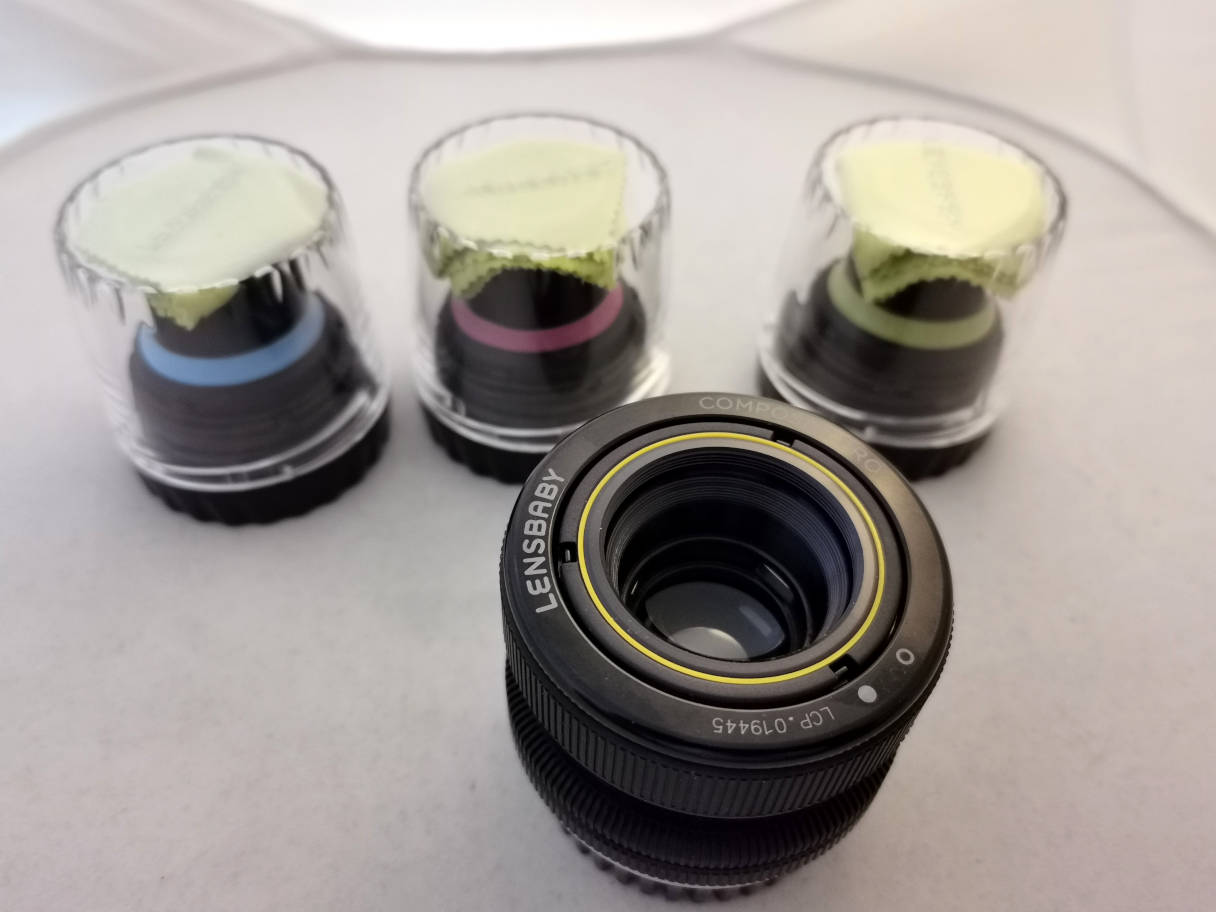
The 4 inserts.
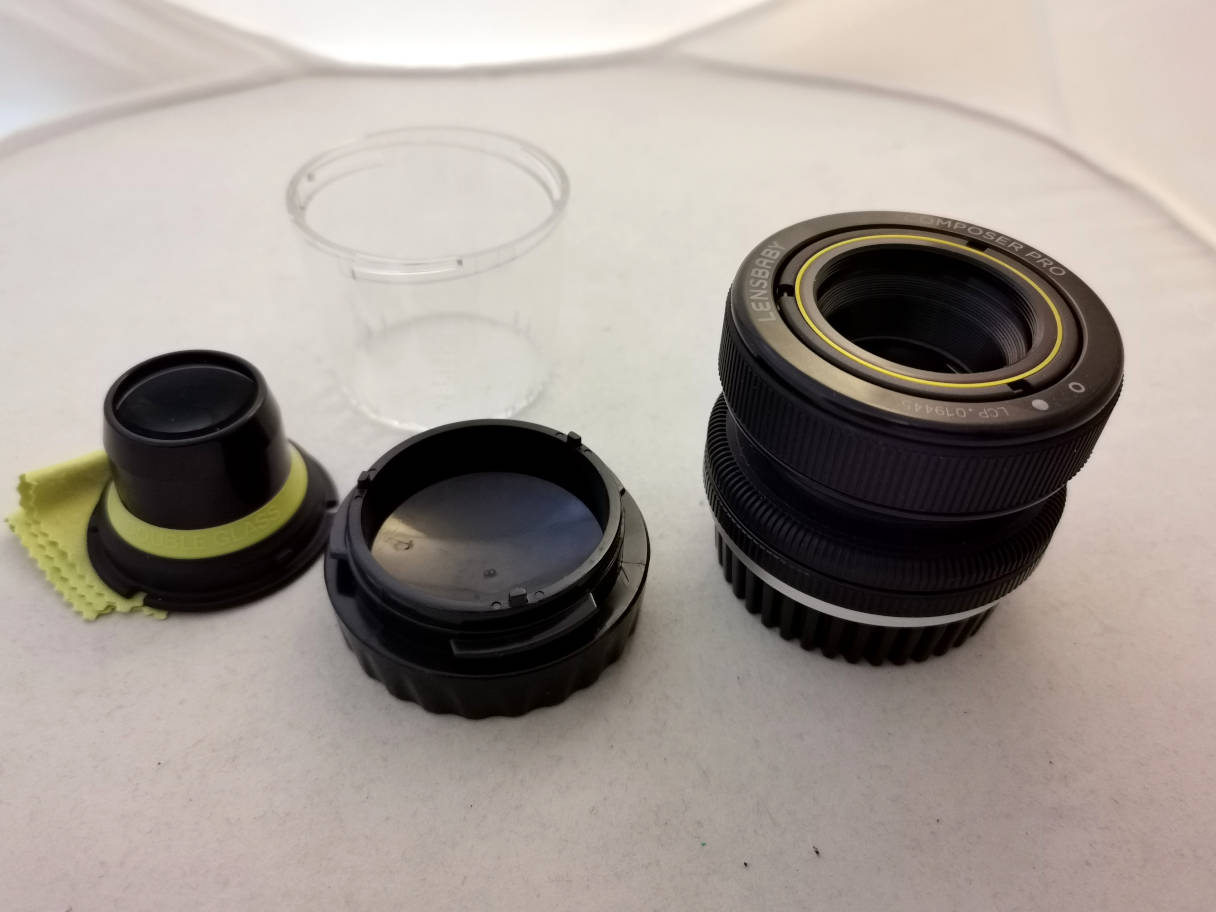
The base of the container is the
so-called swap
tool. You will need it to swap the inserts. the 3 humps of the base
engage into the gaps on the inserts. A small amount of a turn unlocks or fixes the insert.
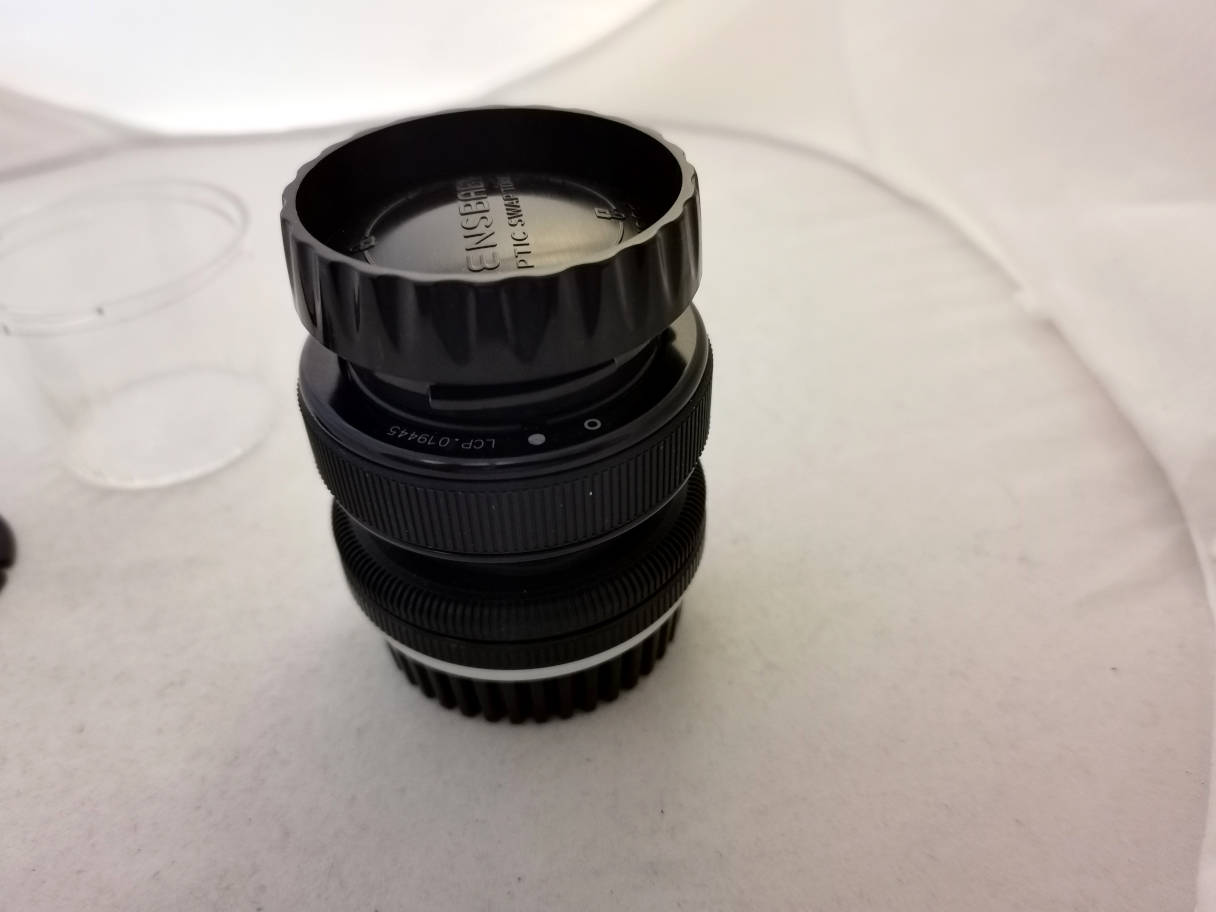
Swap tool engaged.

Composer Pro bent..
Sample pictures: You may click
on the sample image (except closest focus) for full resolution. The
full resolution image opens in a new window, so you can keep it open
for comparison. I tried to focus is on the
satelite dish near the
big solar panel in the center of the photo. ISO 200 unless indicated.
Let us start with a part of an aperture series of the "double glass"
lens.

No disc, just a litle bit of sharpness. ISO 100.
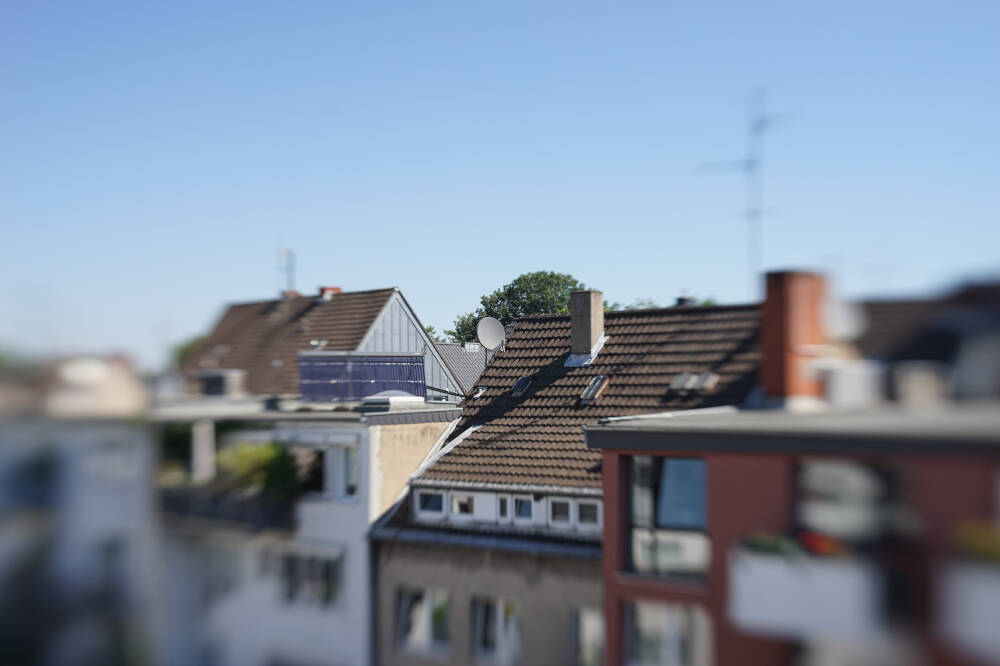
F5.6, a bit more focussed area in the
middle, the rest is blurred.
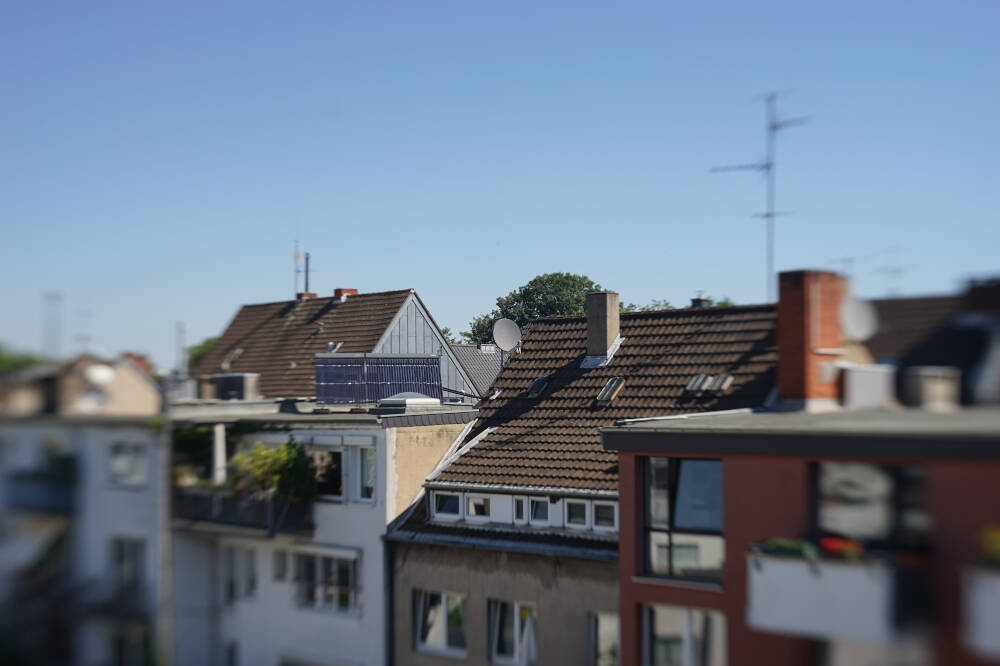
F11, focussed area gets a bit bigger...

F22.
Sharp in the center, soft edges, as promised.
Bending the lens sidewards:

F8, lens bent to the left. Fous on the balcony.
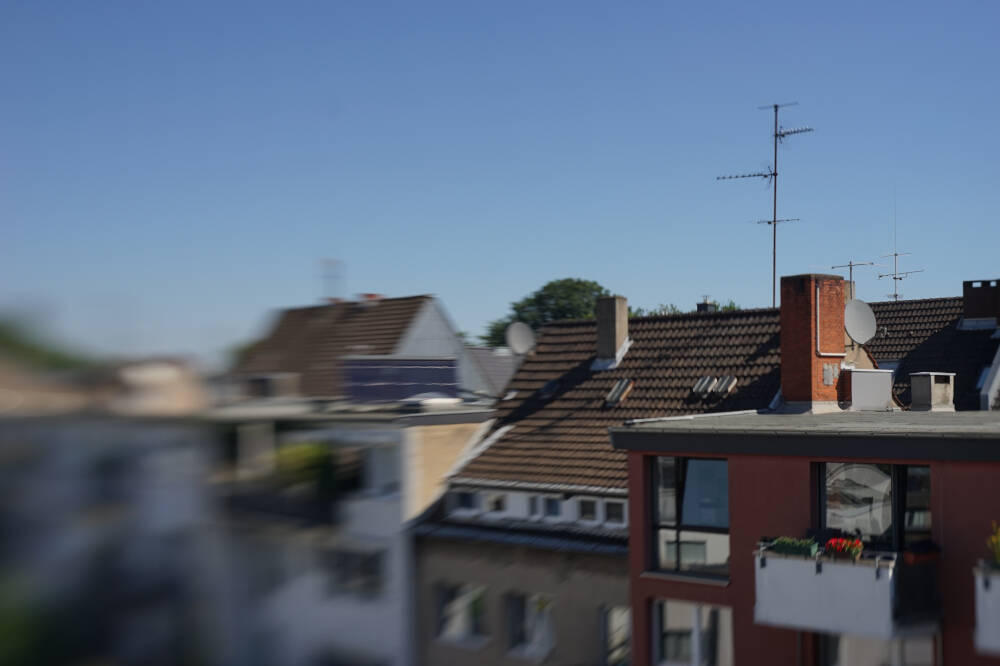
F8, bent to the right. Focus on
the satelite dish fixed to the chimney.
Close
focus, no full resolution picture:
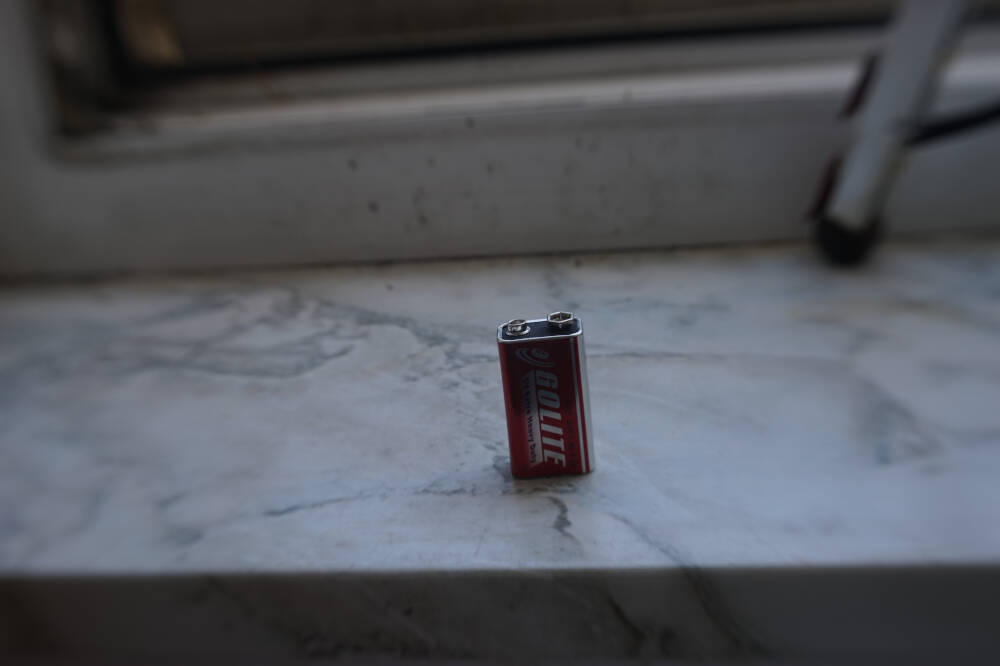
Closest focus of the lens is about 70cm from
outermost
edge of the lens, F 8. Focus on
the contacts of the battery.
"Single glass" lens:

No disc,
even the center is soft and the rest blurry. ISO 100.
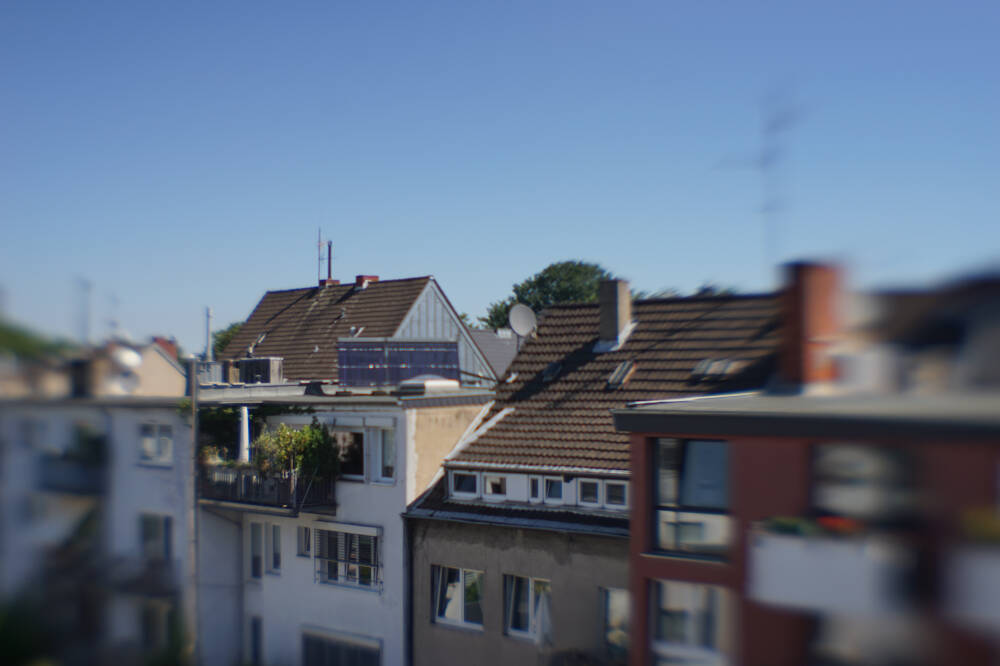
F5.6.
Things get clearer.
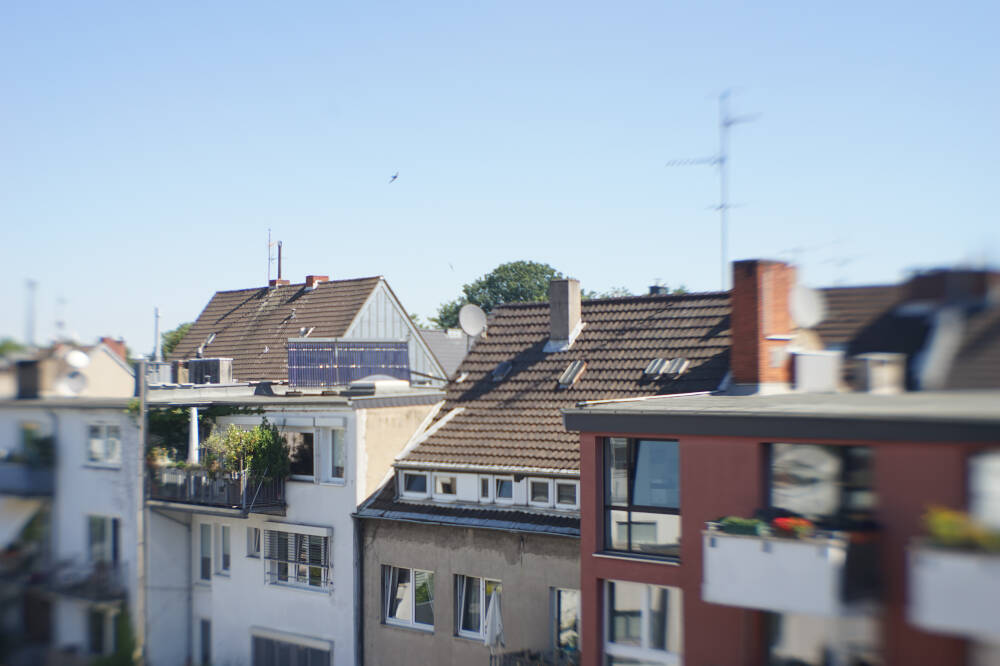
F11, quite OK.

F22. Fine.
Side movements.

F8, lens bent to the left. Fous on the balcony.
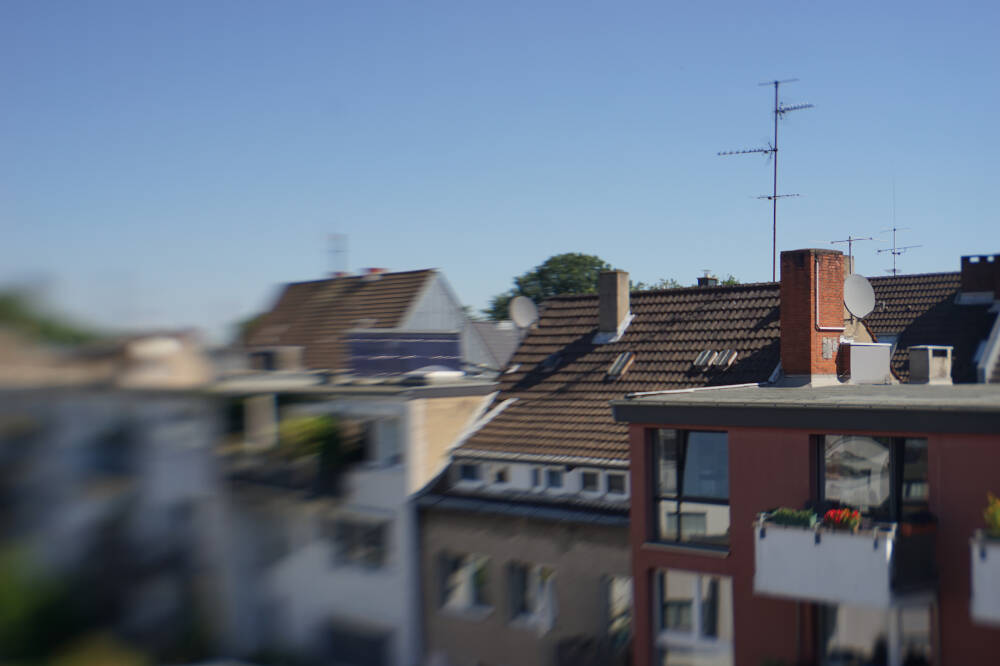
F8, bent to the right. Focus on
the satelite dish fixed to the chimney.
Close focus, no full resolution picture:
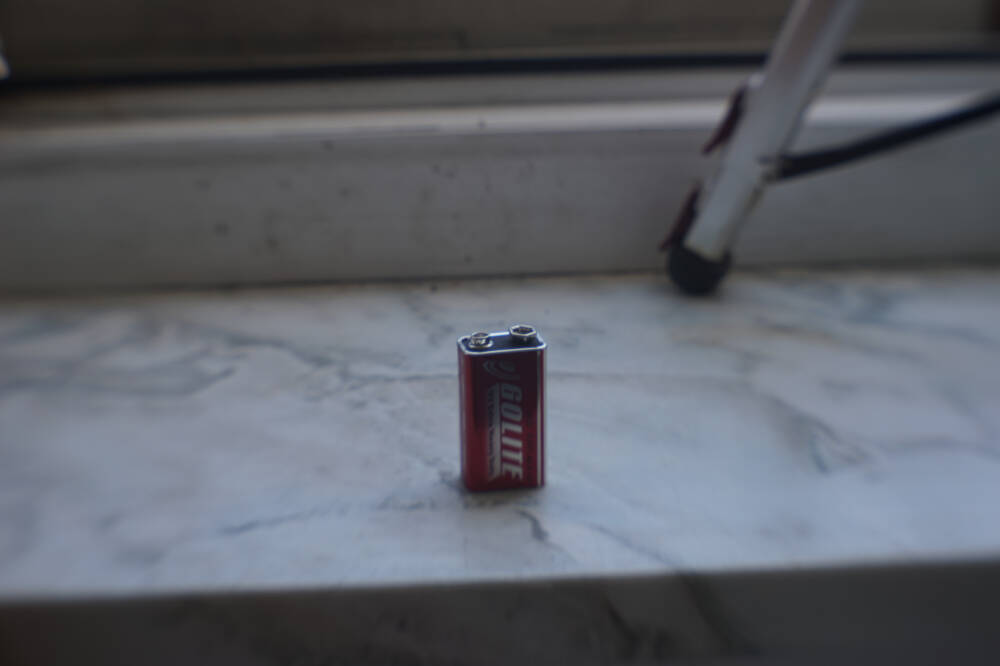
Closest focus of the lens is about 70cm from
outermost
edge of the lens, F 8. Focus on
the contacts of the battery.
Now
let's see the results of the "plastic" lens:
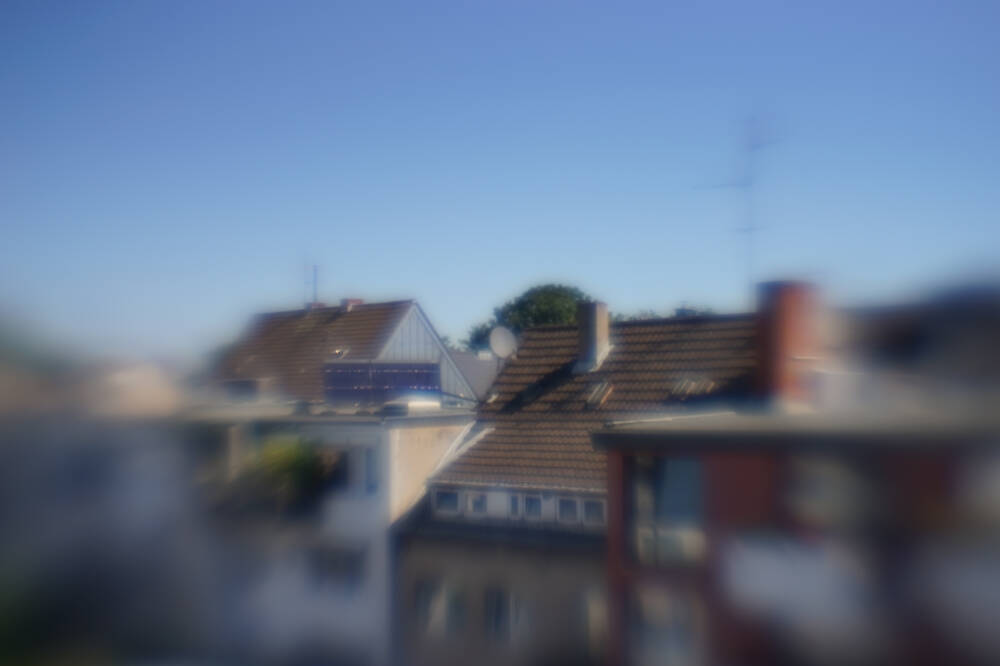
F2, nothing really sharp at all. ISO 100.
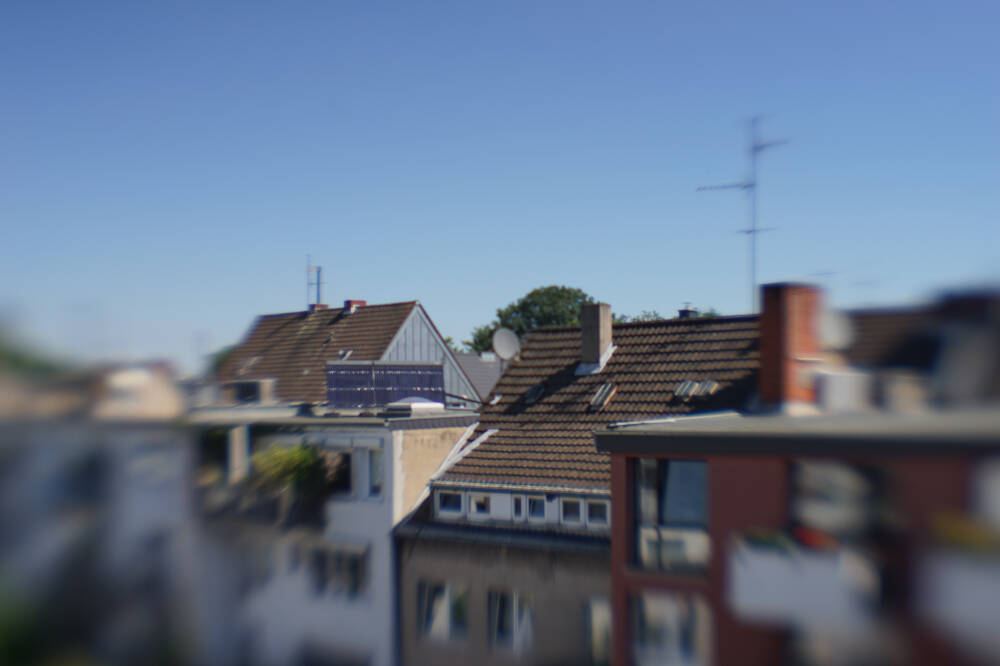
F5.6. A bit better. The lens has a bit of colour cast.

F11. Some more sharpness in the
center, but not really sharp..

F22. Look OK.
Side movements:

F8, lens bent to the left. Fous on the balcony. The image circle of the
plastic lens is smaller than the circle of the glass lenses. So there
is vignetting.
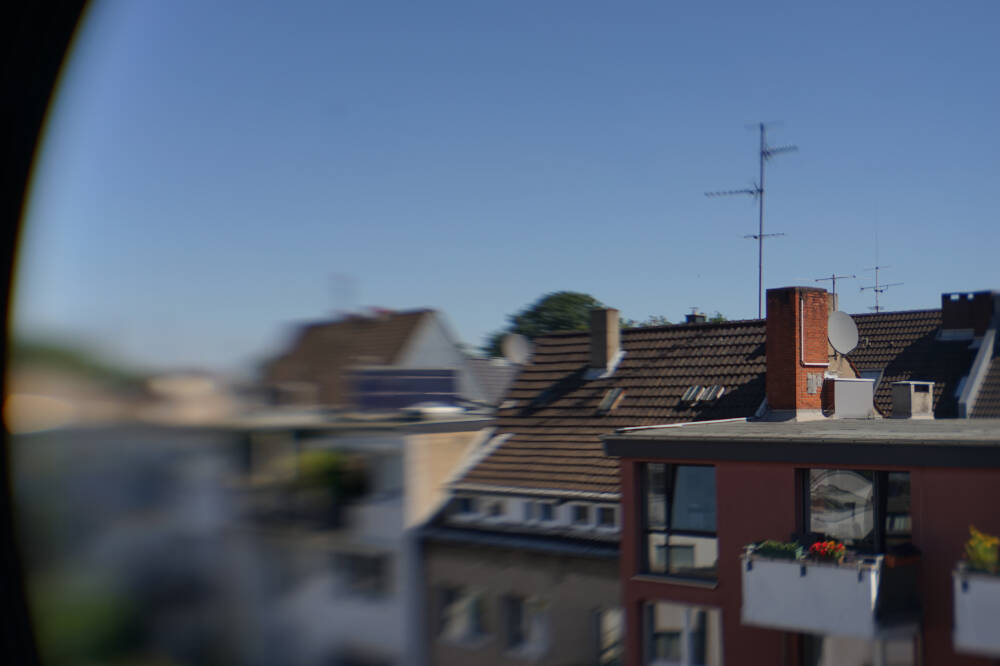
F8, bent to the right. Focus on
the satelite dish fixed to the chimney. Vignetting again.
Close focus, no full resolution picture:
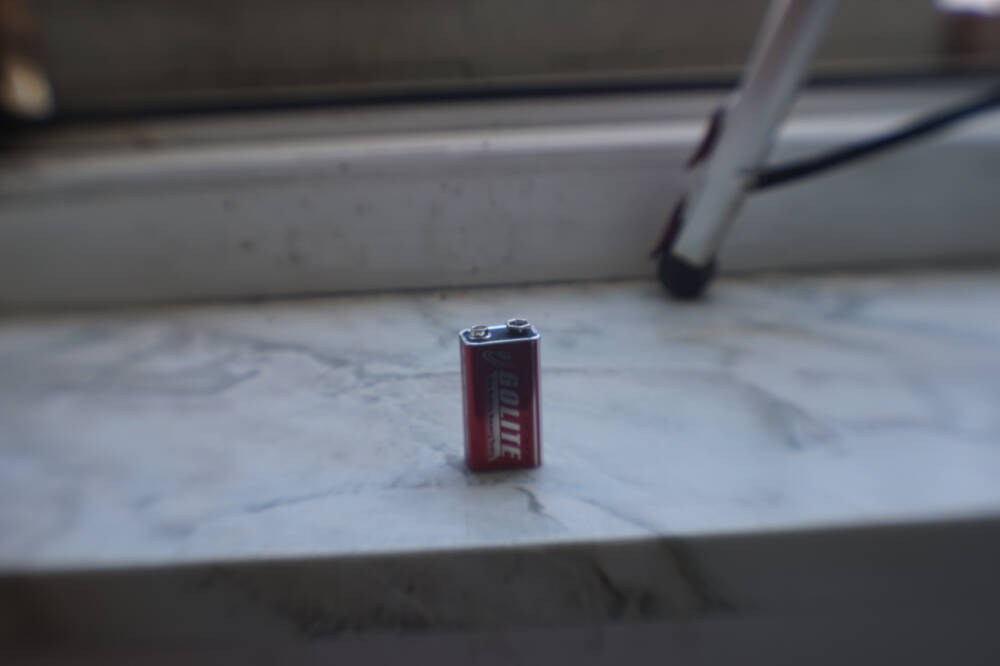
Closest focus of the lens is about 70cm from
outermost
edge of the lens, F 8. Focus on
the contacts of the battery.
In addition to the lenses there is a pinhole insert with 2 pinholes in
a slider:
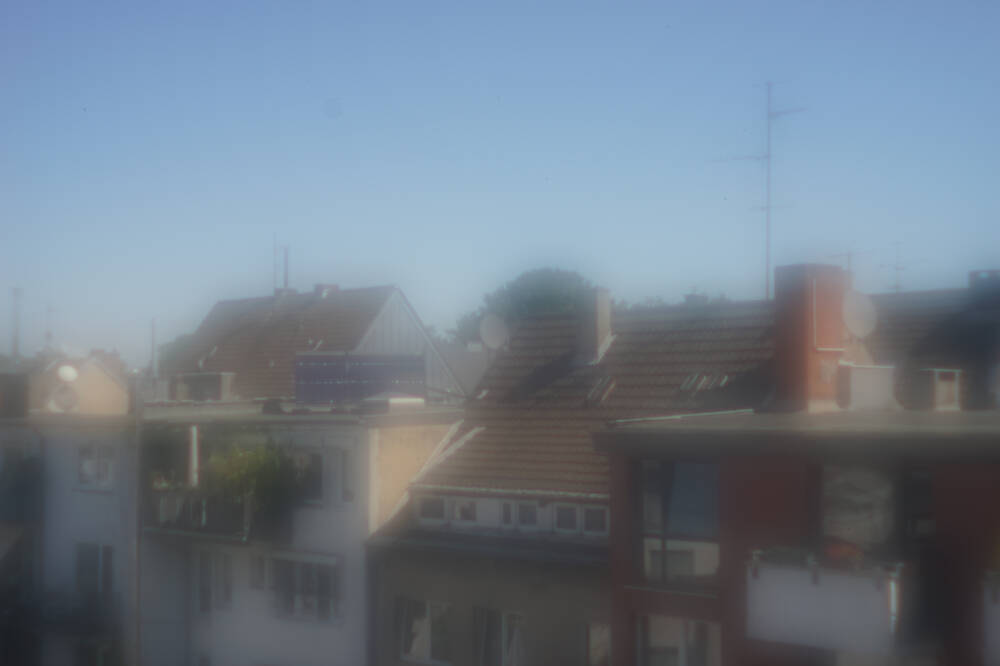
The bigger pinhole. Totally
unusable. No full resolution picture.

The smaller pinhole. Much better, but still too soft.
No full resolution picture. Pinholes for 24x36 format are always
a problem, they are better with large formats.
Finally a test of the Super Wide Lens which I had forgotten with the
other Lensbabies. I put it in front of the double glass lens:

No disc. Quite wide. Only a small part is sharp. A little bit of vignetting.

F4. Some more sharpness in the
center.

F22. Less sharpness and heavy colour cast. Interestinh phenomenon...
As there is already a bit of vignetting on all the photos, bending would not makesense.
Close facus. No
full resolution picture.

Closest focus of the lens is about 30cm from
outermost
edge of the lens, F 8. Focus on
the contacts of the battery.
So this was
quite a lot of test to do with the different inserts. The composer Pro is a nice
system. As mentioned above, it does not squeeze, so it doesn't aspire
dust onto your sensor. You can only guess whether it is oriented
straight, a slight click for the center position would be desirable.
It is easy to use.
It's fun to experiment
with its possibilities. This is one of the very expensive packs. As usual, I found mine for very
cheap, so it was worth a try. In no way would I have payed the original
price. But if you
come across a set for a reasonable price, try it
out. It's fun.

















